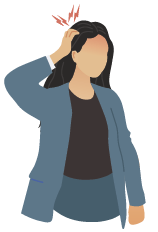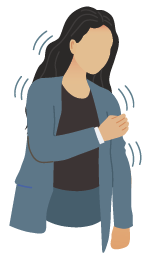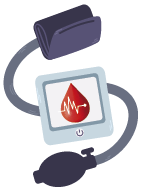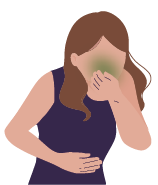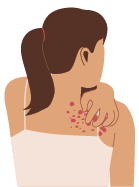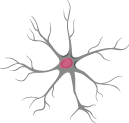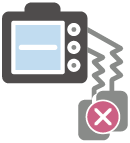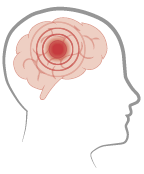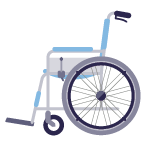Spinal anaesthetics: risks and side effects
About spinal anaesthetics
A spinal anaesthetic is a single injection into your back. It numbs the lower part of your body and you remain awake during the procedure. It can be used for caesarean birth or for other surgery. It can also be used for pain relief after surgery.
You can get more information about spinal anaesthetics for childbirth on the LabourPains website.
You can read more about spinal anaesthetics for surgery or pain relief after surgery in our leaflet Your spinal anaesthetic.
About risk and spinal anaesthetics
Everyone is different and it is not possible to know who will experience a side effect or risk.
Knowing about risks can help you discuss options with your healthcare team and make decisions about your care.
The risks in this leaflet are averages obtained from research studies. You can find out about the research that we used in our spinal anaesthesia and risk evidence table.
Your risks might be higher or lower than these numbers. If you are thinking about having a spinal anaesthetic, your anaesthetist will discuss with you the risks that are more likely or significant for you.
Since labour can be unpredictable, you may require a caesarean birth with a spinal even if you hadn’t planned to. Reading this leaflet and others on the LabourPains website can help you prepare for the unexpected and think about any questions you might have.
Do spinal anaesthetics increase the risk of complications during and after childbirth?
According to the latest evidence, spinal anaesthetics:
- do not cause backpain after childbirth
- do not make your baby drowsy or cause them long-term harm.
What happens if the spinal anaesthetic does not work?
Most spinal anaesthetics work well. They usually take about 10 minutes to work. The anaesthetist will do checks to make sure that your spinal is working well enough for surgery. If it is not, they may:
- need to repeat the spinal injection or offer you an epidural
- suggest a different type of anaesthetic, such as a general anaesthetic.
Out of 100 people who had a spinal anaesthetic
for caesarean birth
5 needed additional pain relief – 95 did not
2 needed a general anaesthetic – 98 did not
Risks and side effects associated with spinal anaesthetics
| These numbers are out of every 100 people who had a spinal | |
| What happened? | For how long? Can it be treated? |
|
Headache (post-dural |
It can happen between one day and one week after a spinal anaesthetic. It can be mild and get better within a few days with over-the-counter pain relief, or it can be severe and require treatment in hospital. You can get more information about post-dural puncture headaches on our website: Headache after a spinal or epidural anaesthetic. How many? |
|
Shivering |
It can happen for 2–4 hours after the spinal anaesthetic. Shivering is usually a side effect of the spinal anaesthetic. It’s not due to feeling cold, but you can have a blanket to make you more comfortable. Shivering stops when the spinal anaesthetic wears off. How many?
|
|
Low blood pressure |
It can happen immediately and last for a few hours, soon after the spinal anaesthetic. It can make you feel sick, dizzy or drowsy. Your healthcare team can give you medicine to improve your blood pressure. How many? |
|
Feeling sick (nauseous) |
It can happen immediately and last for a few hours, soon after the spinal anaesthetic. Your healthcare team can give you anti-sickness medicines if it happens. How many? |
|
Being sick (vomiting) |
It can happen immediately and last for a few hours, soon after the spinal anaesthetic. Your healthcare team can give you anti-sickness medicines if it happens. How many? |
|
Itching |
It can happen immediately and usually wears off after a couple of hours. Your healthcare team can give you medicine to treat the itching. How many? |
|
Difficulty passing urine |
You might not be able to feel if you need to go to the toilet after a spinal. The healthcare team sometimes recommends a urinary catheter, a thin tube to drain the urine directly from your bladder. This might stay in until the next day.
|
The risks below are rare.
| These numbers are out of every 20,000 people who had a spinal | |
| What happened? | For how long? Can it be treated? |
|
Weak, numb, tingly
|
Temporary damage: (days or weeks) and normally gets better by itself. How many? About 10 did – About 19,990 did not Permanent damage How many? About 1 did – About 19,999 did not You can get more information from our leaflet Nerve damage after a spinal or epidural anaesthetic. |
|
Loss of consciousness |
The anaesthetist will treat you immediately and give you a general anaesthetic if this happens. How many? 1–7 did – 19,993–19,999 did not
|
| These numbers are out of every 50,000 people who had a spinal | |
|
Meningitis symptoms
|
Meningitis infection can happen days or weeks after the spinal. This can be treated with antibiotics. How many? 1 did – 49,999 did not
|
| These numbers are out of every 200,000 people who had a spinal | |
|
Infection in or around |
It happens days or weeks after the spinal. It is treated with antibiotics or sometimes surgery to drain the abscess. How many? 2 did – 199,998 did not
|
|
Blood clot around the |
This is a serious complication which may require emergency surgery. It can cause leg paralysis if not treated quickly. How many? 1–2 did – 199,998 did not
|
| These numbers are out of every 500,000 people who had a spinal | |
|
Becoming paralysed |
How many? 2 did – 499,998 did not
|
Disclaimer
We try very hard to keep the information in this leaflet accurate and up-to-date, but we cannot guarantee this. We don’t expect this general information to cover all the questions you might have or to deal with everything that might be important to you. You should discuss your choices and any worries you have with your medical team, using this leaflet as a guide. This leaflet on its own should not be treated as advice. It cannot be used for any commercial or business purpose. For full details, please click here.
First Edition, September 2025
This leaflet will be reviewed within three years of the date of publication.
© 2025 Royal College of Anaesthetists
This leaflet may be copied for the purpose of producing patient information materials. Please quote this original source. If you wish to use part of this leaflet in another publication, suitable acknowledgement must be given and the logos, branding, images and icons removed. For more information, please contact us.





